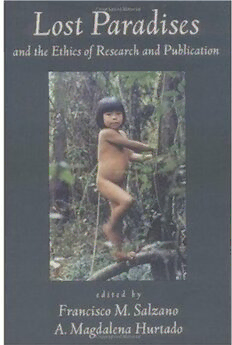
Lost Paradises and the Ethics of Research and Publication PDF
249 Pages·2003·0.762 MB·English
Most books are stored in the elastic cloud where traffic is expensive. For this reason, we have a limit on daily download.
Preview Lost Paradises and the Ethics of Research and Publication
Description:
In 2000, the world of anthropology was rocked by a high-profile debate over the fieldwork performed by two prominent anthropologists, Napoleon Chagnon and James V. Neel, among the Yanamamo tribe of South America. The controversy was fueled by the publication of Patrick Tierney's incendiary Darkness in El Dorado which accused Chagnon of not only misinterpreting but actually inciting some of the violence he perceived among these "fierce people". Tierney also pointed the finger at Neel as the unwitting agent of a deadly measles outbreak. Attracting a firestorm of attention, Tierney's book went straight to the heart of anthropology's most pressing questions: What are the right ways to study a tribal people? How can scientists avoid unduly influencing those among whom they live? What guidelines should govern the interactions - economic, social, medical, and sexual - between a scientist in the field and the people being studied? This volume represents anthropology's thoughtful, measured reply to the issues raised by this heated controversy. Placing the dispute within the context of ongoing debates over the ethics of biomedical research among human populations, the contributors to this volume discuss how the interaction between investigators and their subjects can most sensibly be governed. They consider the responsibility of the media in disseminating anti-scientific and pseudo-scientific views, and how scientists might best educate journalists to enable them to effectively educate others. In the wake of what was widely construed as a major scientific scandal, this landmark volume lays out in detail the principles and ground rules of anthropological and scientific fieldwork.
See more
The list of books you might like
Most books are stored in the elastic cloud where traffic is expensive. For this reason, we have a limit on daily download.
